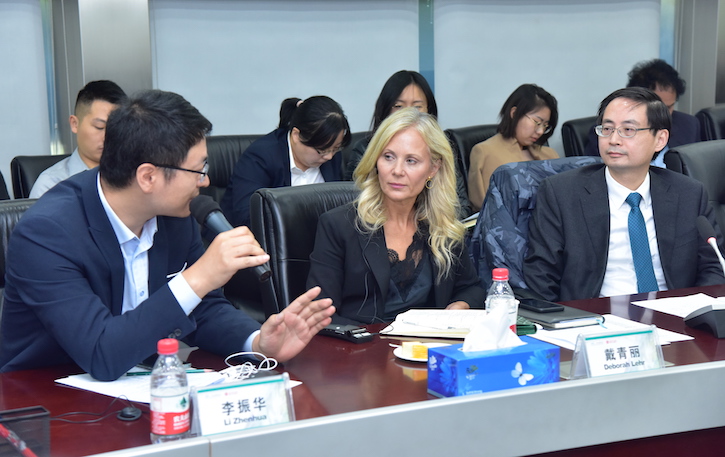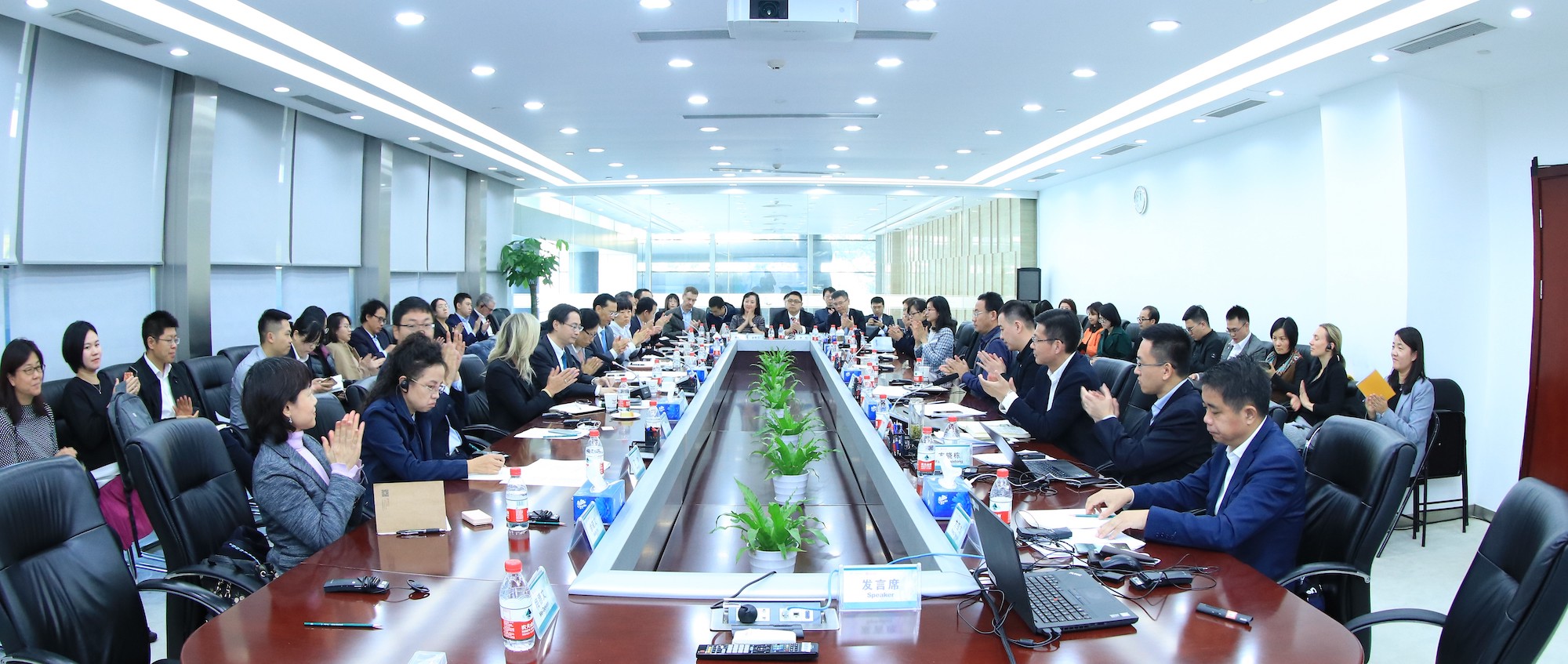The Paulson Institute’s Green Finance Center and the Research Center for Green Finance Development of Tsinghua University cohosted a recent roundtable discussion in October on “Engaging Fintech to Promote Green Finance Development in China” in Beijing. It is the latest in a series of cohosted roundtables on green finance in China and will help to provide insights for a joint study by the co-hosts to be released at the beginning of next year surveying the successful cases of fintech application for green finance.
The event convened over 50 policy makers, bankers, experts, and business leaders in China’s green finance and fintech space. Officials from the People’s Bank of China (PBOC), Ministry of Ecology and Environment (MEE), Beijing and Huzhou municipal governments, experts from the United Nations Environment Programme (UNEP), People’s Insurance Company of China (PICC), Industrial and Commercial Bank of China (ICBC), Ant Financial, Huzhou Bank, and Suzhou Bank, as well as leading green fintech experts were engaged in substantive discussions. From highlighting the progress that has been made in China including using fintech to track challenges facing green finance development in banking, insurance, asset management, and SMEs financing to delving into prospects of scaling fintech to promote robust green finance development widely, the meeting covered considerable ground.

These are some of the main themes to emerge from the roundtable.
- Fintech is a transformational ally for green finance development. The barriers to achieving scale for the green finance market can be address most effectively with fintech. Through the use of big data, artificial intelligence (AI), blockchain, and a host of other technologies, fintech can help to address barriers like information asymmetry, and the high cost for identifying green opportunities. It can also be key to significant improvements to the efficiency of environmental risk management, developing green supply chains, designing asset classification systems, and to unlocking financing for sustainable small and medium enterprises (SMEs).
- There are a number of challenges for fintech that is slowing the pace of progress. Data is a core issue to address including the sourcing, quality, and quantity of data, and the secure transfer of it. Attached to this is the question of data privacy. Another identified challenge is the lack of capacity to effectively address these shortcomings.
- China has developed a holistic approach to enable development of fintech applications for green finance. The fintech space in China permeates from the top-down, but also from the bottom-up with a strategy that includes the central bank, local governments, commercial banks, and insurance and asset management companies. Fintech innovation is meant to encourage behavioral change systemically, organizationally, and individually. For example, the PBOC has deployed a green finance IT management system that ensures financial institutions can report green credit data reliably and in real-time, and commercial banks, insurance companies, and asset management companies have begun to experience with green credit products, risk assessment platforms, and digitizing green assets all powered by fintech. Individual behavioral change is an approach that Ant Financial is pursuing successfully with the Ant Forest model that encourages low carbon living to address climate change and the environment.
The fervor surrounding fintech will continue to evolve as global capital markets are increasingly disrupted and changed, and its application to green finance is worthy of further exploration. We take up this topic in our upcoming study conducted with the Research Center for Green Finance Development of Tsinghua University.





